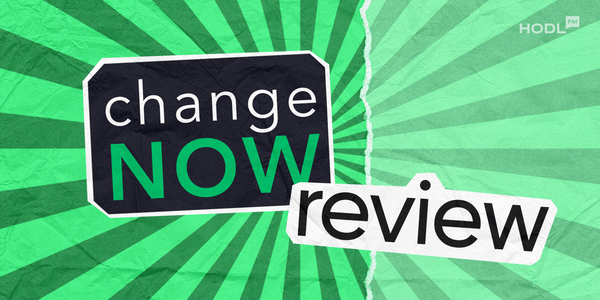Remember the first time you tried moving crypto from one Layer 2 to another? If you used the native bridges, you probably stared at your screen for days waiting for that withdrawal to clear. Seven whole days, just sitting there. It's enough to make anyone lose their mind.
That's exactly the problem Hop Exchange set out to fix back in 2021. But here we are in 2025, and the bridge landscape looks completely different. So let's dig into whether Hop still holds up.
What is Hop exchange?
Hop Exchange is a toolset designed to simplify token transfers across different blockchain layers and sidechains, founded by Chris Whinfrey, Miguel Mota, and Shane Fontaine in 2021.
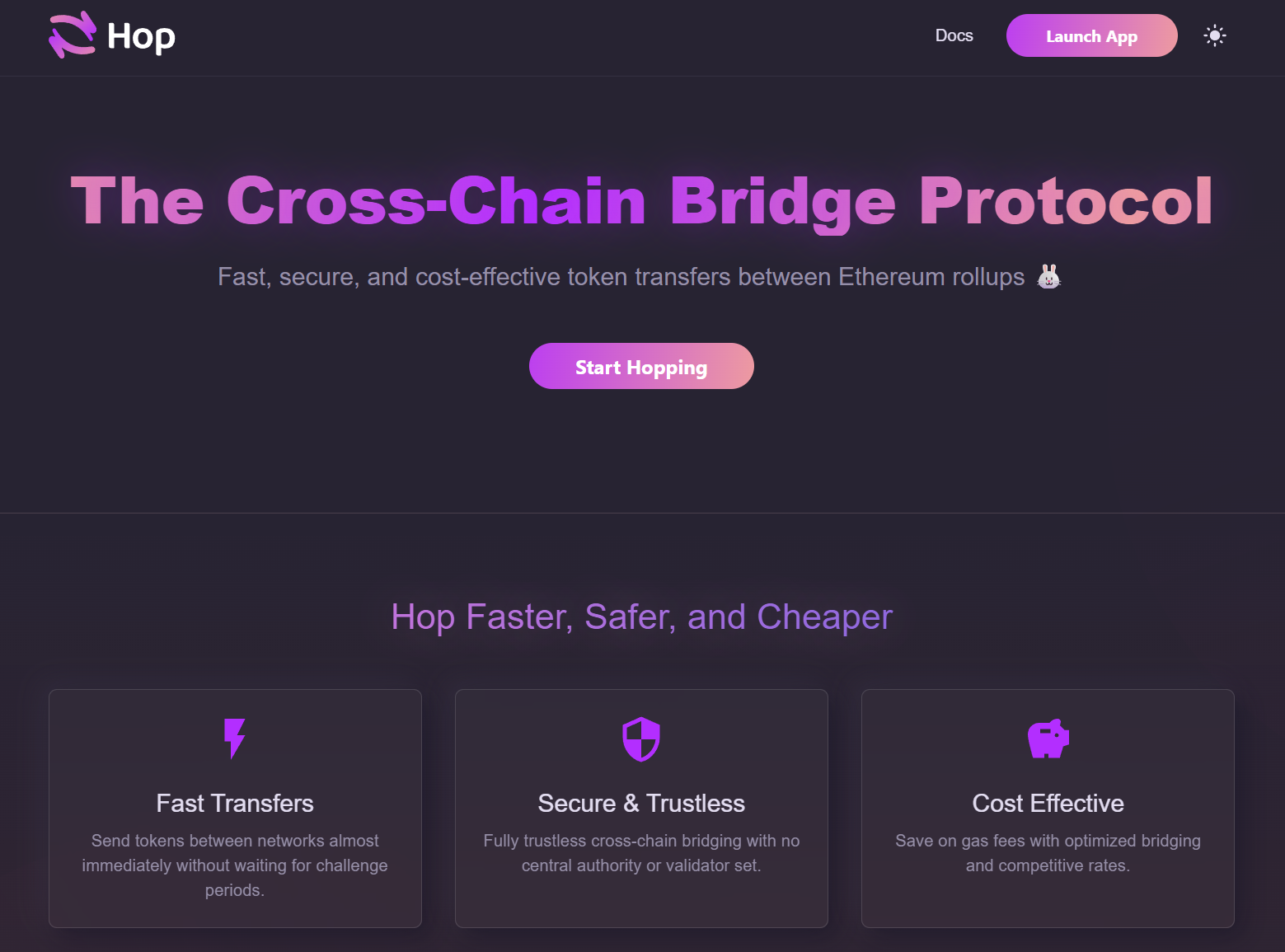
When Hop launched, the timing made sense. Gas fees were brutal, L2s were taking off, and people were frustrated. According to usage statistics shared by Hop in 2022, over 60,000 ETH were bridged across Ethereum Layer 2 networks through the protocol by 483,190 accounts. Those are real numbers showing real adoption.
The big selling point? You don't have to wait seven days when withdrawing from optimistic rollups. That alone was game-changing when the hop protocol bridge first appeared.
How hop exchange works
The protocol employs a two-pronged architectural approach involving cross-network Hop bridge tokens and Automated Market Makers to facilitate seamless exchanges.
Let me break down what actually happens when you bridge. You send your tokens, and Hop converts them into something called hTokens. Think of these as universal vouchers that work across different Layer 2s. The hTokens represent assets locked on supported chains and are issued at a 1:1 ratio with the locked asset, facilitating transfer and redemption across chains.
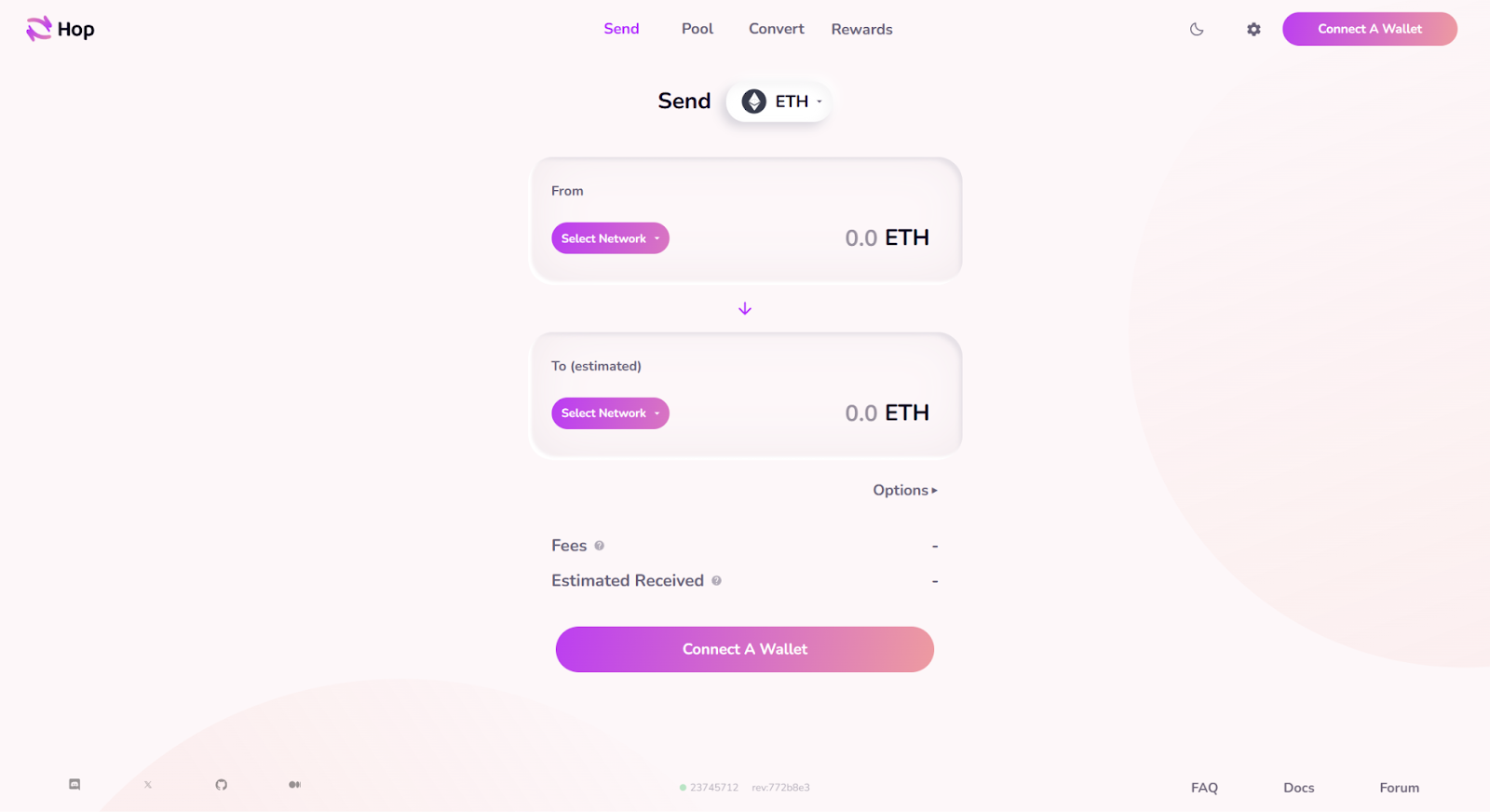
Now here's where it gets clever. Bonders front liquidity on the destination chain in exchange for a small fee, knowing they will eventually receive their funds back because they run verifier nodes on each rollup and can verify transactions as they're made.
Once your hTokens land on the destination chain, an AMM automatically swaps them for the real token you want. From your perspective, you just sent ETH from Arbitrum and received ETH on Optimism a few minutes later. Clean and simple.
Supported chains and tokens
Hop supports Ethereum mainnet, Arbitrum, Optimism, Polygon, and Gnosis, focusing on major Ethereum Layer 2 solutions.
This is both good and bad news. Good if you live in the Ethereum world. Bad if you're trying to hop over to Solana or Avalanche - you'll need a different bridge for that.
The main tokens that the protocol can handle are ETH, USDC, USDT, DAI, MATIC, and SNX. It is not the full list; however, it includes the main ones people usually trade daily. The support for stablecoins is excellent, and that is probably the case since stablecoins are the ones you will be moving around most often, and thus their support really matters.
Fees and transaction speed
Now, let's get to the actual numbers. The average time for transfers is between 5 and 20 minutes, based on the networks of the sender and the receiver. Not instant, but still a lot better than waiting a week.
But when you look at the competition? Hop's median fill time is 36 seconds, which compares to Across Protocol at 3 seconds, Stargate at 18 seconds, and Synapse at 19 seconds. Hop is definitely slower than the new kids on the block.
If you are transferring $50 worth of tokens in a gas spike situation, the fees might be around $15-20, which is really painful. The calculation only favors when it is thousands instead of hundreds being moved.
Security and reliability
This is where Hop actually shines a bit. The protocol has undergone comprehensive security reviews by Solidified and Monoceros Alpha, with ongoing monitoring by CertiK Skynet and hosting bug bounty programs. Audits were conducted in April and May 2021 before the protocol's launch.
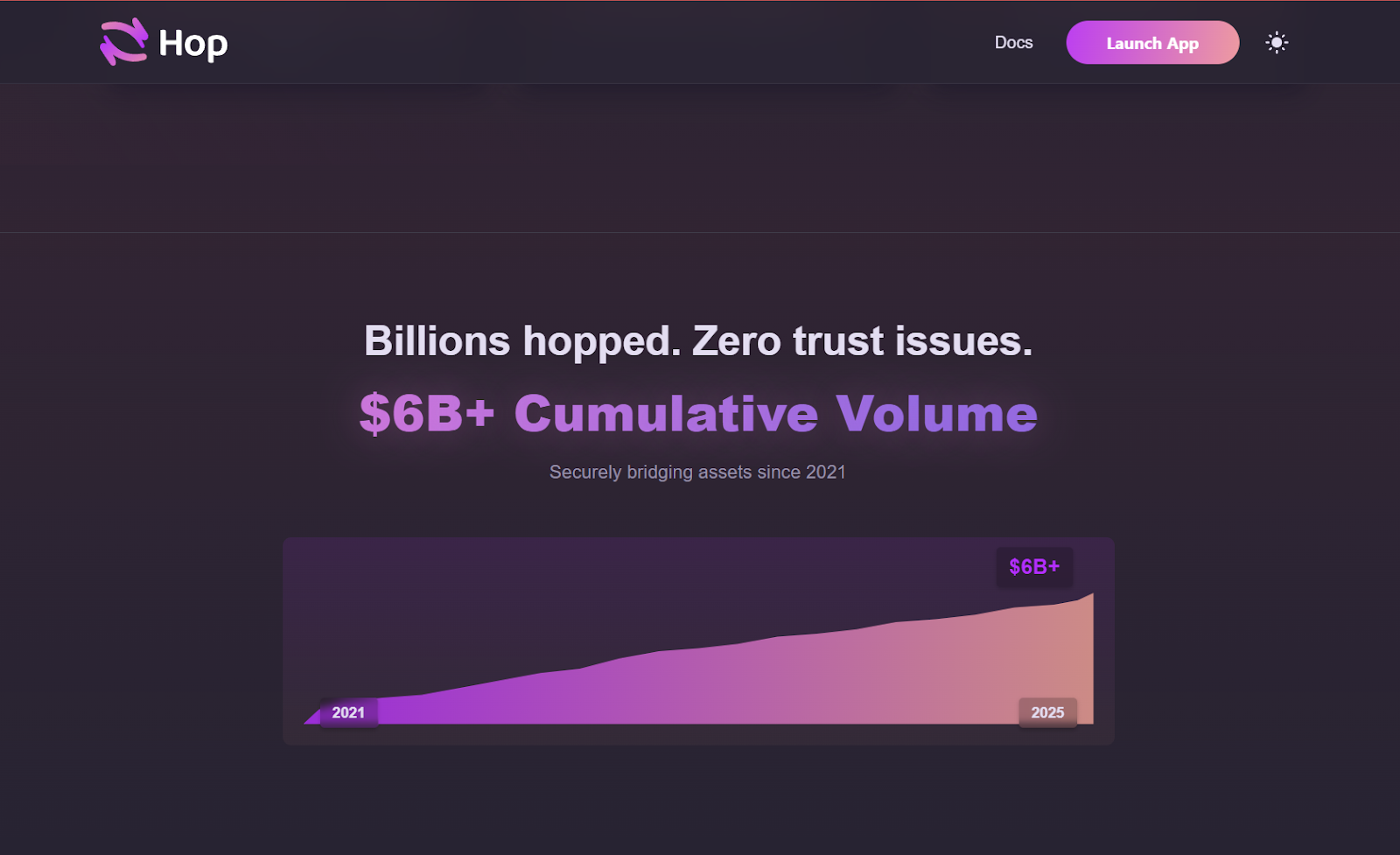
All contracts utilize multi-signature security with a one-day timelock, ensuring transparency and preventing immediate malicious changes. Translation: if something fishy tries to happen, there's a 24-hour window to catch it.
Most importantly? No major hacks reported. In a space where bridges get exploited all the time, that's actually worth noting. The non-custodial design means your funds stay in your control the whole time, which matters more than people realize.
HOP token and governance
The HOP token serves one major purpose: governance, introduced as a means to develop an inclusive administration strategy through a Decentralized Autonomous Organization.
Basically, if you hold HOP tokens, you get to vote on stuff. HopDAO members vote on decisions such as which sidechains, Layer 2 networks, or Layer 1 blockchains the protocol will support next, and which assets will be added to the bridge.
The hop exchange token airdrop was interesting, though. 8% of the total token supply was distributed to platform users and socially active members through an airdrop, rewarding pioneer community members. If you'd bridged more than $1,000 at least twice, or were active in their Discord or Twitter, you got some. Nice way to reward early users and distribute governance power.
How to use hop exchange
Alright, let's walk through how to use Hop Exchange step by step.
Head to the hop protocol bridge official site at Hop Exchange. You'll need MetaMask or another Web3 wallet already loaded up with funds on whichever chain you're starting from.
Click Connect Wallet in the top right. Pick your source chain - let's say you're on Arbitrum. Then pick where you're going - maybe Optimism. Enter how much you want to send.
The interface shows you all the fees upfront. This is actually helpful since you can see exactly what you're paying before committing. If the fees look crazy, you can wait for gas to calm down.
One nice feature: you can send to a different address than the one you're sending from. Click the settings gear icon to add a recipient address. Useful if you're moving funds between your own wallets or sending to someone else.
Typically, your tokens will appear in about 5 to 20 minutes. For a short period, you will have hTokens that are automatically transformed into the real thing. In case a strange situation occurs and the conversion takes too long, you can switch them manually through the pool interface.
Hop protocol vs. alternatives
The rivalry has become intense. Across Protocol has come up as a quicker choice with median fill times of only 3 seconds, compared to Hop’s 36 seconds. Besides, Across has the lowest base fee of 0.06%, which is much lower than that of the other players in the market.
So what does the hop protocol still have going for it? Power users love Hop because it minimizes the pain points of traditional bridges, especially the long wait times when moving assets between networks. It's been around longer, has a proven track record, and if you only use Ethereum L2s, it covers your needs.

Across wins on speed. Stargate wins on liquidity for stablecoins. Synapse wins on variety. Hop sits somewhere in the middle - reliable but not exceptional at any one thing.
Pros and cons
What works:
You skip that awful seven-day withdrawal period. Multiple security audits with no major hacks reported. You keep control of your funds the whole time. Billions in transaction volume processed. The community actually runs governance through HopDAO. Deep integration with the Ethereum ecosystem. The hop protocol bridge official site interface is pretty user-friendly.
What doesn't:
Only works with Ethereum and a handful of Layer 2s. Noticeably slower than Across and some others. Fees are complicated and can surprise you. HOP token doesn't do much beyond voting. Can't bridge to Solana, Avalanche, or other popular chains. Liquidity sometimes feels thin compared to bigger bridges.
Community and reputation
Published reports suggest that Hop's bridging protocol records an average of about 50,000 daily users, with transactions made by over 400,000 individual accounts. That's solid adoption, though not explosive growth.
The founders came from Authereum, so they have Ethereum experience. The project communicates regularly through Twitter and Discord. Governance is transparent and actually happens, which you can't say for every DAO out there.
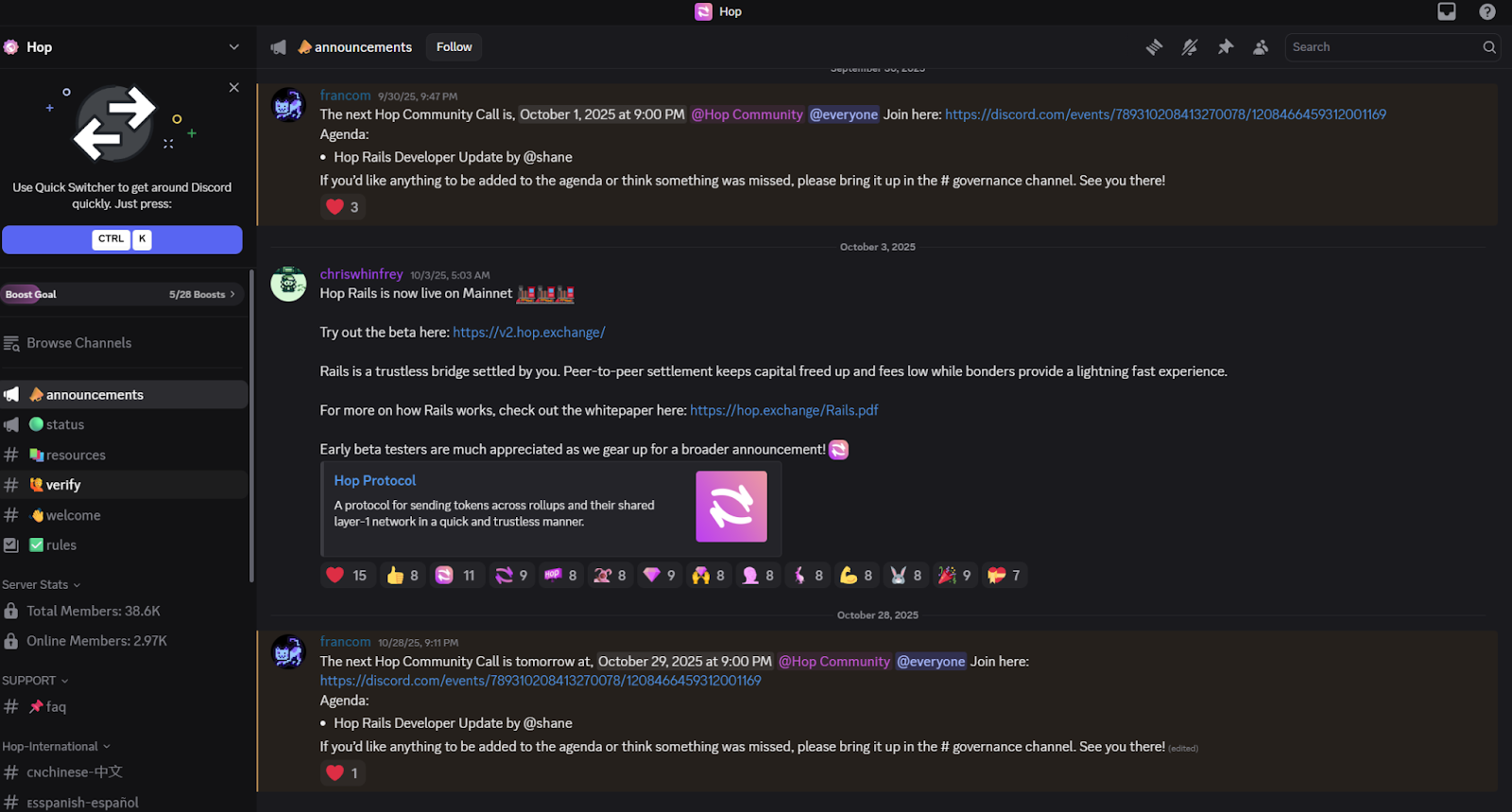
They're working on V2, which caused some confusion as V1 incentives wound down. Check the hop protocol bridge official site for current updates if you're planning to provide liquidity.
Conclusion
Here's my honest take. Hop Exchange solved a real problem in 2021, and it still works fine in 2025. If you're moving assets between Ethereum Layer 2s and care about security, it gets the job done.
Is it the best cross-chain bridge? No, not anymore. Is it a bad choice? Also no. For Ethereum-focused users who want something reliable and battle-tested, the hop exchange crypto platform still makes sense. Just don't expect it to blow your mind with speed or ultra-low fees.
At the end of the day, Hop is a solid middle-of-the-pack option in a crowded field. Nothing wrong with that, but nothing extraordinary either. Choose based on what matters most to you: speed, cost, security, or network coverage. And as always, do your own research before moving serious money across any bridge.

Disclaimer: All materials on this site are for informational purposes only. None of the material should be interpreted as investment advice. Please note that despite the nature of much of the material created and hosted on this website, HODL FM is not a financial reference resource, and the opinions of authors and other contributors are their own and should not be taken as financial advice. If you require advice. HODL FM strongly recommends contacting a qualified industry professional.





